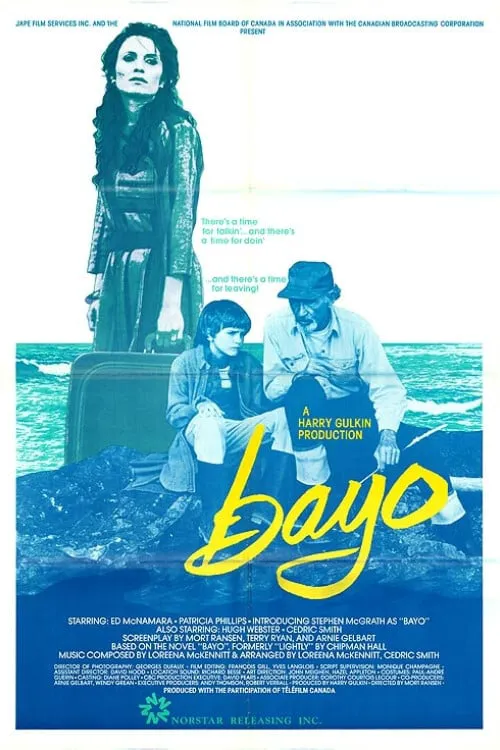The Shores of Struggle and Song: Crafting the Emotional Depth of Tickle Cove
Nestled precariously on the rugged shores of Bonavista Bay, Newfoundland, the fictional village of Tickle Cove isn’t just a backdrop for the poignant film centered around the young Bayo Longlan; it’s a character in itself, breathing life—and hardship—into every frame. This profound cinematic journey, which delves into the raw, unvarnished realities of a traditional fishing community, offers viewers a rare glimpse behind the curtain of human resilience, familial discord, and the unyielding pull of home.
Anatomy of a Conflict: Dreams vs. Roots
At its core, the film meticulously crafts a battle of wills and dreams within the Longlan family. Sharon, portrayed with an unyielding weariness, embodies the desperate longing for escape. Her gaze fixed on the urban sprawl of Toronto, she represents a generation yearning to break free from the hereditary shackles of a declining fishing industry. This isn’t a story of adventure, but of arduous survival, driven by the harsh economic truths of a life dictated by the sea. The narrative courageously confronts the painful reality of inherited circumstance, making Sharon’s deep-seated frustration with her father, Phillip, almost palpable. The challenges in bringing this tension to screen lie in balancing Sharon’s undeniable pain with the audience’s understanding of Bayo’s conflicting desires.
Generational Tides and Unspoken Legacies
Yet, it is through the innocent yet wise eyes of ten-year-old Bayo that the deepest, most complex emotional currents flow. Unburdened by his mother’s resentments, Bayo represents a different kind of devotion – an almost mythic idealization of his deceased father, a figure whose spirit is woven into the very fabric of the sea. His dilemma—torn between a mother’s modern hopes and a yearning for a life steeped in ancestral connection—forms the tragic heart of the story.
And then there’s Phillip, the patriarch, burdened by regret over a son lost too soon, seeing in Bayo a painful echo and a desperate chance for connection. The film eloquently navigates the silent anguish and unspoken love that define their relationship amidst the backdrop of an historical industry teetering on the brink. Crafting these nuanced emotional connections, particularly Phillip’s guilt and Bayo’s unwavering admiration, requires subtle performances and a keen understanding of multi-generational family dynamics unique to such remote communities.
Tickle Cove: A Character Forged by Sea and Stone
The genius of the filmmaking lies in its profound understanding of place. Tickle Cove is far more than just a beautiful Newfoundland landscape; it’s a crucible where lives are forged and tested. The visuals are reportedly breathtaking, capturing the raw, elemental beauty of the coast, but never shying away from its harshness. From the weathered fishing boats struggling in turbulent waters to the close-knit, yet often suffocating, communal ties, every aspect of Tickle Cove contributes to the narrative’s authenticity.

This imagery underscores how geography shapes destiny, and how the vast, unforgiving ocean represents both livelihood and a constant threat. One can almost feel the biting wind and taste the salt air, a testament to the evocative power of the cinematography and production design in immersing the viewer in this very particular world. The challenge here would have been capturing the visual majesty without losing the gritty realism that grounds the family’s struggles.
The Art of Unveiling Human Truths
Crafting such a nuanced portrayal of human experience requires a delicate touch. The film, in its construction, appears to excel in presenting relationships not as simplistic binaries, but as intricate tapestries of love, resentment, loyalty, and obligation. The choices faced by Sharon, Phillip, and especially Bayo, are not easy ones, mirroring the real-life dilemmas faced by countless individuals in remote communities grappling with modernization and economic decline. The filmmakers clearly aimed for an unvarnished realism, allowing the audience to truly inhabit the Longlan family’s world and feel the weight of their choices.
Ultimately, the story of Bayo is more than just a family drama; it’s a profound meditation on identity, belonging, and the enduring human spirit. It asks vital questions: When do you fight for a better life elsewhere, and when do you fiercely cling to the roots that define you? And what does it truly mean to stay true to oneself amidst the inevitable winds of change? Through its tender, yet unflinching gaze, this film promises to be a deeply moving cinematic experience, resonating long after the final frame.